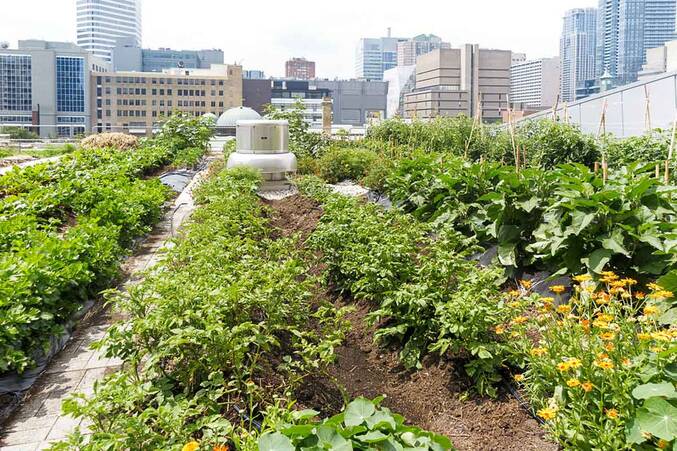Photograph: Shutterstock
From household chores to installation of solar roofs, rooftops are used for varied purposes. A terrace that engages human activity makes the space more useful. Similarly designing an organic farm on your terrace can be quite a refreshing activity. Architect Hrishikesh Phadke lists useful tips on how to utilize rooftops to create organic farm.
1. To begin with, ensure that the terrace space has adequate waterproofing or sub-surface water run-off facility. Choose the appropriate treatment for the same. One method is brickbat coba where RCC (reinforced cement concrete) slabs are exposed and the surface is cleaned, debris removed and cement is mixed with waterproofing material. This is used on the surface to make the surface even and prevent water from getting accumulated.
2. Now place a drain board over the finished terrace surface. The puncture on the drain board creates a subsoil drainage gap and prevents water from staying on the surface by directing it to stormwater drain pipes. Anti-root treatment or root repellent paints may be applied over the waterproofing material for longer roots. Then, a geotextile cloth of 155 gm or square metre can be placed on the drain board for filtration purposes. This cloth allows excess water to pass to the drain board.
3. This is topped by soil, coco peat or a combination of both as the growth medium (growth medium is a solid or liquid designed to support the growth or small plants). Coco peat is used because it is lightweight and has a good water-holding capacity. However, minus the nutrients, coco peat should be supplied with nutrients along with water in fixed proportions. Coco peat can also act as the water storage medium when the farm is unattended on prolonged holidays.
4. For storage, keep bio fertilizers and vermicomposting along with the growth medium in pots/tubs depending on the plant size. You can also use oil cans, unused helmets, vegetable/milk crates, specific types of wood, good thick UV-treated plastic bags, 2/5/10 litre or more water bottles/cans, discarded, empty paint buckets, or PVC drainage pipes for aesthetic purposes. Other options are pots made out of clay, mud, cement, terracotta, etc.
5. To water the plants, you can use portable water or water from STP (sewage treatment plants).
6. Vegetable options that can be grown on rooftops are okra, tomato, chilly, fenugreek, all kinds of green leafy vegetables, curry leaves, etc. The flower options that can be grown are jasmine, tagar, champa, etc. Avoid plants from the Ficus family on the terrace unless used in pots.
7. Depending on the plant type, factors such as sunlight and wind have to be controlled by nets or pergolas.
8. Prevent pests and insects using methods such as physical removal, a strong jet spray of water or 10ml of neem oil mixed in 1litre of water. Plantation of chilly/garlic/ginger is said to drive out pests while a spray of wood ash on the plant also helps.
9. One of the most effective and natural way to drive away unwanted worms is to invite birds. You could include a bird bath and a bird feeder to attract birds.
10. Consult a structural engineer for the load-bearing capacity of existing RCC framework and a horticulturist/gardener prior to the commencement of such work.
Looking for property portal?
Leave your comments
Comments
nike roshe run
2016-11-15 03:19:41Saved as ? favorite, I love your web site! [url=http://www.airmaxs2017.fr]nike roshe run[/url]


















